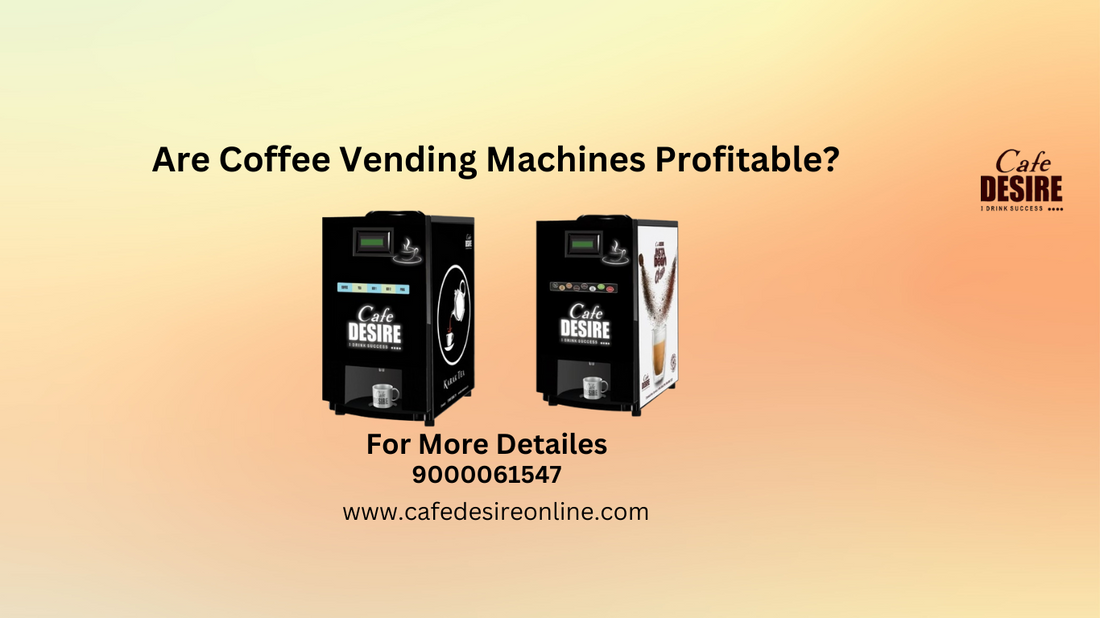Table of Contents
- Introduction
-
Understanding the Profitability of Coffee Vending Machines
- Low Operational Costs
- High Demand for Coffee
- Recurring Revenue Model
- Scalability
- Profit Margins
-
Key Factors for Maximizing Profits
- Strategic Placement
- Quality of Ingredients
- Regular Maintenance
- Competitive Pricing
- Variety of Beverages
-
Conclusion
Introduction
The demand for quick and convenient beverages has increased, making coffee vending machines popular for businesses, offices, and public spaces. But are coffee vending machines profitable? Let’s explore the potential revenue, costs, and factors contributing to their profitability.

Understanding the Profitability of Coffee Vending Machines
1. Low Operational Costs
One of the key advantages of coffee vending machines is their relatively low operational cost. Unlike traditional cafés that require baristas, large space, and heavy equipment, vending machines need minimal maintenance and staffing. The primary expenses include the initial investment, stocking supplies, and occasional servicing.
2. High Demand for Coffee
Coffee is one of the most consumed beverages worldwide. Businesses, educational institutions, hospitals, and corporate offices rely on coffee vending machines to provide employees and customers with an instant caffeine fix. The high demand ensures consistent sales, making the business model sustainable and profitable.
3. Recurring Revenue Model
Once installed, coffee vending machines generate continuous revenue without requiring active supervision. Many businesses set up machines in high-traffic areas where customers can quickly purchase coffee. A well-placed machine can serve hundreds of customers daily, resulting in a steady income stream.
4. Scalability
Starting with a single coffee vending machine is a great way to test the market. If successful, entrepreneurs can expand by installing multiple machines in strategic locations, increasing their revenue potential without a significant rise in operational costs.
5. Profit Margins
The cost of producing a cup of coffee from a vending machine is significantly lower than the price at which it is sold. For example, a single cup may cost around ₹5–₹10 to produce, but it can be sold for ₹15–₹30 or more, depending on the location and target audience. These high margins contribute to the overall profitability of the business.
Key Factors for Maximizing Profits
To ensure maximum profitability, consider these essential factors:
-
Strategic Placement: Choose locations with high foot traffic, such as malls, office buildings, railway stations, and hospitals.
-
Quality of Ingredients: Using premium coffee and tea products enhances customer satisfaction, leading to repeat purchases.
-
Regular Maintenance: Keep the machine clean and well-stocked to prevent breakdowns and maintain a steady flow of customers.
-
Competitive Pricing: Set reasonable prices that offer value to customers while ensuring good profit margins.
-
Variety of Beverages: Offering multiple options like cappuccino, espresso, tea, and hot chocolate attracts a larger customer base.
Conclusion
Coffee vending machines present a lucrative business opportunity with high demand, low operational costs, and excellent profit margins. With the right strategy, location, and maintenance, they can be a profitable investment for businesses and entrepreneurs looking for a passive income stream.
If you're considering starting a coffee vending machine business, now is a great time to explore this growing industry!
-

